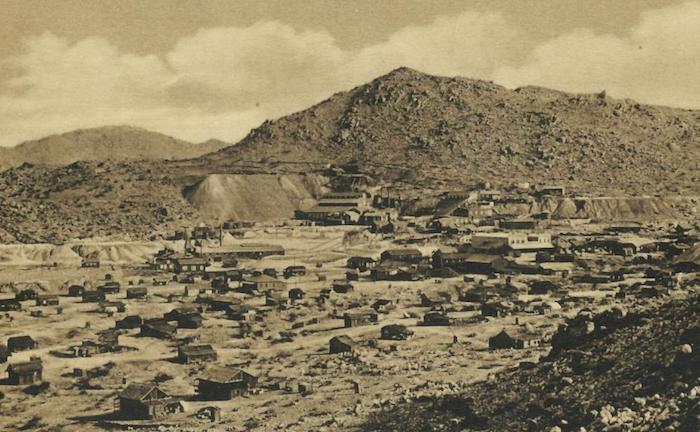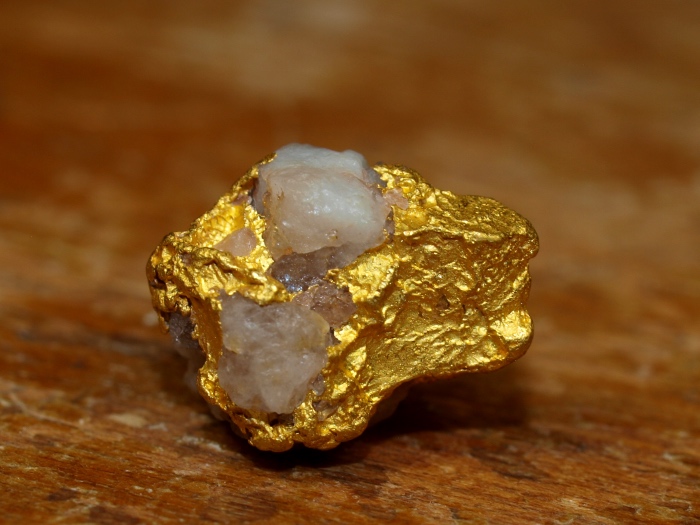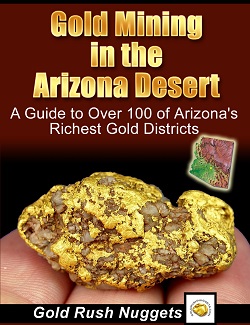
The Congress Mine lasted for decades and was the pride of Arizona
In the southern of Yavapai county of Arizona lies a small town. It has a population of less than 5,000 people and is mostly used as a bedroom community for nearby Wickenburg. It may not look like much today, but this little town has quite a history.
The beginning of Congress
The story of Congress dates back as far as 1884 and it began with the Weaver district gold rush. After the initial phase of placer mining (a method of finding gold nuggets, washed out of the rocks by the water, by filtering the river sands using sluice boxes) miners began to look for gold in the Date Creek Mountains to build mines. That is where a lone miner comes into play.
Dennis May was the man who discovered the Congress Mine. And the mine was the reason for the foundation of the town there. After 20 years of different operations of placer mining, seeking for gold in the mountains, researching, Dennis May found the rich deposit of gold, soon to be the Congress Mine.
His partners developed the mine further, after he had sold his rights to it and by 1887 had built a mill for processing gold nearby. In order to further attract money, people and resources, a railway junction was built at the foot of the mountains. And that was the place the modern Congress would be built upon. It was called the ‘Lower town’ then. The main town of Congress was closer to the mine and to the mill, where people would need less time to go to work. People called it ‘Mill town’.
The Congress Mine and the golden days of the town
For a long time, the mine was the sole reason for the town’s existence. It is only natural to study its features a little bit. When the mine was found by Dennis May in 1884 it was only 15 feet deep. By the end of its use, the Congress mine’s main shaft was 4,000 feet deep (making it the deepest mine in Arizona) and the most productive one.
People of that time noticed a peculiar form of the mine. It had a dike in the middle that ran all the way through the natural ledge. The veins were situated down in the walls of the dike and were a little bit slanted, so when the shafts were dug, they were also slanted following the veins.
As people dug deeper and deeper, the technologies of processing and transporting the ore became more and more sophisticated, the initial methods of getting the ore from the rock remained the same though.
During its history the mine had its ups and downs concerning the quality and quantity of the ore in veins but new ones were always found deeper and deeper. At its highest technological peak of the mine the workers used steam powered hoists in order to transport the ore to the surface.
It also had three types of processing plants: reduction, cyanide and concentrating. The largest amount of workers who had earned their living there was more than 400. All of those factors confirm the Congress mine being the most productive mine established in Arizona.
During those years both parts of Congress prospered. ‘Lower town’ had a lot of restaurants, shops, saloons even two churches and one school. ‘Mill town’ had three processing plants, a hospital and an innumerable amount of the mine claimers’ offices. There was even a railroad junction built between the towns.
Also Read: Using a Drywasher to Find Desert Gold
And: How to Locate Gold Veins in Hard Rock

What happened to Congress when the gold ran out?
In the 1910s it became evident that the mine’s resources were running out. It was already 4,000 feet deep so there was no point digging even further and the ore coming from the veins became scarce. So, the president of the company decided to put the main resources to a better use.
The mine was still worked for some time but by 1917 it became evident that the mine will be closed for good. That brought decline to Congress. In 1938 the post office in ‘Mill town’ was closed and post could only be obtained from the nearby Congress junction. The old Congress suffered the same fate as many of the Gold rush towns suffered.
In just a decade after the closing of the post office, Congress became abandoned. The modern town bearing its name was rebuilt by the railroad company and served as a train station town. Only the cemetery is left as a memory of the old Congress now.
Next: Metal Detecting for Gold Nuggets in Arizona

